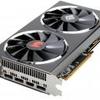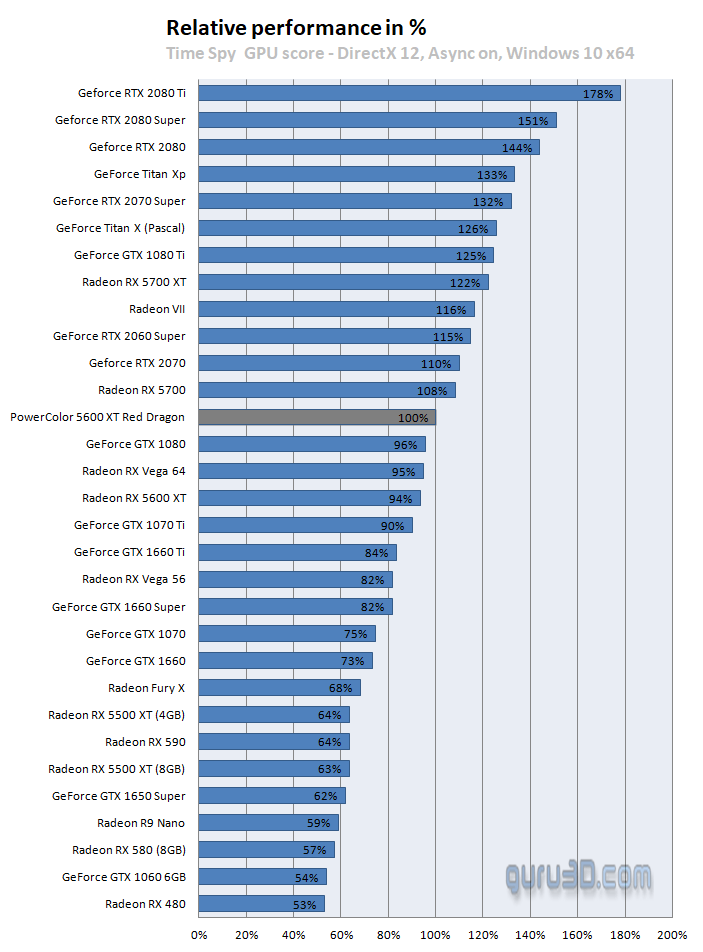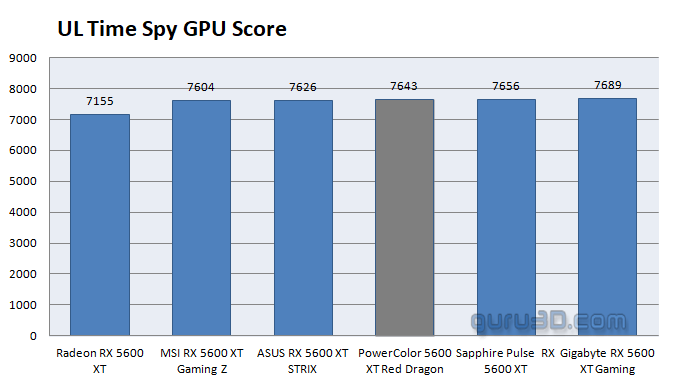Final words and conclusion
.final words
The Red Dragon Radeon RX 5600 XT is quite honestly one of the better behaving products we have tested to date. Of course, we needed to update the vBIOS :) But yeah, it performs just as well as the other cards, is very silent and really, good looking. Temps are a fraction higher overall, but I am fine with that as the tradeoff is just a very silent product. It, in fact, has a dual BIOS as well, we didn't even test the second mode, as the performance mode simply shows green lights all over. The second BIOS also follows a lower 135W GPU power design. Everybody that will purchase this product will run the default perf BIOS mode, which is silent. So the second BIOS mode with a substantially lower power envelope and reference settings is a nice fail-safe really. So yes, you take a Radeon RX 5700 (non-XT), remove two GDRR6 and lower the clocks, that in a nutshell is the 5600 XT. And with the cheaper price tag and a bit of tweaking, this could be a serious success. All by itself as a GPU, NAVI sits fairly close towards last-gen Vega performance levels. So the improved architecture works out well for AMD, it just works. Depending on how and where you measure the performance overall is at the very least interesting and in that respect the Radeon RX 5600 XT is fighting off the 1660 running to 2060 series from NVIDIA (with exceptions here and there) and the premium clocked models closing in on 2060 Super. Then there is, of course, the discussion on how relevant you find hardware-accelerated Raytracing support. Most of you don't care at this time, but much like anything in the tech industry, anything and everything will evolve, so this year we will likely see say a 5800 with just that.
.performance
As mentioned, Radeon RX 5600 XT show good performance in the 1920x1080 and Quad HD resolutions 2560x1440 realm of resolutions and sits at Radeon VEGA level performance. That is not a bad position to be in reality as that includes the newer titles like Battlefield V, Metro: Exodus and others. Obviously architectures differ compared to NVIDIA but also last-gen VEGA, and that means you'll be seeing wins and losses in perf compared to team green as well as that vega series. 6GB versus 8GB is a bit of an icky thing, I do prefer 8GB cards and would always recommend that. That said at Full HD, 6GB seems to be pretty decent, but for any graphics card close to 300 USD or above, I would say 8GB was the better way to go. The rDNA architecture does show strength and IPC increase, especially seen from Polaris the results are pretty amazing. The cost of ownership for Polaris at the time of writing is, of course, a much better proposition. But overall, yeah we're not disappointed.
We've added another chart (above) to show you how close the premium SKUs are that we've tested thus far. So really it doesn't matter what brand you choose, your choice needs to be based on price, design, and cooling. This PowerColor revision has a 150W TGP, yet it all performance roughly the same. The reference clocked SKUs will perform slower but can be tweaked just as well as the more premium OC SKUS. The same goes for tweaking, which is limited on the clock frequency, voltage and memory. Ergo the cards all tweak more or less same.
.pricing
The XT overall as a reference product is priced at 279 USD. The custom boards are roughly that same amount of money. We expect some boards to be more premium and more expensive. In this price category I, however, feel you should not be passing 300 bucks. At the time of writing, we've seen this Red Dragon listed at $289 at eggy. And together with the Sapphire PULSE that is the second SKU that is living up to the price level as it offers something really good as a whole. The card sits at roughly 73 Degrees C while gaming, which is a tiny bit warm but totally fine. The fan will be from ramping up at a strong temperature increase, but it ramps down and settles in a very silent 35 DBa fashion at low RPM during gameplay. We've have heard minuscule bits of coil whine at best. But I do want to note that any graphics card at a high-enough FPS will make some coil-whine.
.energy
The total power draw for the card we measure to be roughly 170 Watts. That number varies a bit per game title, workload, resolution and even refresh rate of course. It's an okay wattage, especially compared to the competition's products with the same performance bracket.
.conclusion
I like the Red Dragon for many reasons. It ticks most of the boxes in aesthetics, design, performance (properly factory tweaked out of the box perf) and really nice low acoustics. These metrics combined with the listing price of $289 simply make this a top 3 product. We've seen ASUS and MSI run to 340 USD, I mean come on. All cards with a factory tweak perform more or less the same, so in that respect, it's all a bit of a boring flurry. Your choice should be based on things like acoustics, temps, and price. Let's do more with less is a thing you often see in the technology sector, most processors are the same, just binned and reconfigured. For a more mainstream GPU figured, well we can design multiple GPUs, but that is expensive. So with the RX 5600 XT they simply use the 5700 and reconfigured things a bit. There's nothing wrong with that, and as you guys confirmed, the 5700 series has been a hit from the very beginning. So I expect the same for the 5600 series, albeit a notch slower at a starting price of 279 USD this might become a very attractive gaming GPU in both the 1920x1080 and 2560x1440 resolution domain. The aesthetic design is very nice, the noise levels good and the performance in line with all other 5600 XT premium model cards we have tested. The looks are good, we see a nice metal backplate and yeah, it's just a matter of how much you are willing to spend on a graphics card versus how acceptable you deem 6GB to be? I mean the performance up-to WQHD really isn't an issue. Tweaking wise you'll bump an easy 10% extra out of the card. Overall a nice design and well-performing product. Certainly recommended for the more avid and casual PC gamer. We think PowerColor has a winner here, a properly nice aesthetic design, the noise levels are good and the performance more or less reference based on what we now refer to as the 'Boost BIOS'. PowerColor prices it right as well, 289 USD. As such highly recommended if you are in the market for a 5600 XT.
- 3DMark FireStrike + Time Spy + Port Royale)
- Download AMD Radeon drivers
- Download NVIDIA GeForce drivers
- Download PowerColor BIOS
- Download AMD BIOS Flash Software
Sign up to receive a notification when we publish a new article.
Or go back to Guru3D's front page
LOAD"*",8,1
- Hilbert




